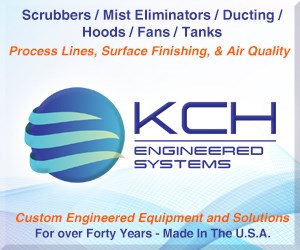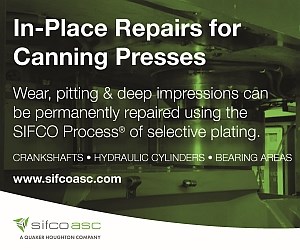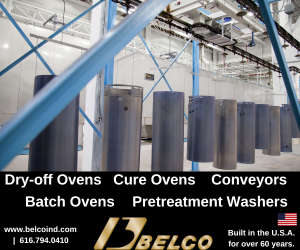Zinc Corrosion
We have been experiencing white corrosion (zinc oxide) while our steel components are in storage. All of these assemblies are nitrogen-brazed components and then are subject to clear zinc plating.What do you think is the root of our problems?
Q. My company produces steel components. All of these assemblies are nitrogen-brazed components and then are subject to clear zinc plating. The plating bath is chloride, and we are using a clear chromate that has been approved for 120+ hours to white corrosion. After the plating line, we manually dip all our assemblies into a solvent-based rust preventive to help with the air pockets and bare spots that are common due to the design of the assemblies. Within the last year we have been experiencing white corrosion (zinc oxide) while the assemblies are in storage. What do you think is the root of our problems? G.N.
A. Do you see these white areas on the uncoated areas of your parts, or is the zinc oxide seen only on areas that are completely plated with zinc? Assuming that the corrosion is appearing on the plated surfaces, I would suggest that your rinsing step after the plating in the zinc chloride bath should be investigated in more detail. If the plated parts are not thoroughly rinsed after plating you may have a residue of acid salts left on the surface that can cause the corrosion of the zinc, giving zinc oxide.
You should also investigate how the parts are being stored. If you have a lot of humidity present in your warehouse, the moisture plus the residual salts on the surface will give you a white corrosion. Try storing your parts with a drying agent of some type.
Related Content
-
Advantages to Pumped Eductor Agitation
Not all agitation methods are created equally. Pumped agitation with eductor nozzles can improve process tanks and quickly show a reduction in operating costs while keeping staff safe, following environmental legislation and preventing pollution.
-
An Overview of Electroless Nickel Plating
By definition, electroless plating is metal deposition by a controlled chemical reaction.
-
Liquid Chrome Vs. Chromic Acid Flake
Contemplating how to continue offering chromic acid services in an increasingly stringent regulatory world? Liquid chrome products may be the solution you’re looking for.










.jpg;maxWidth=300;quality=90)


